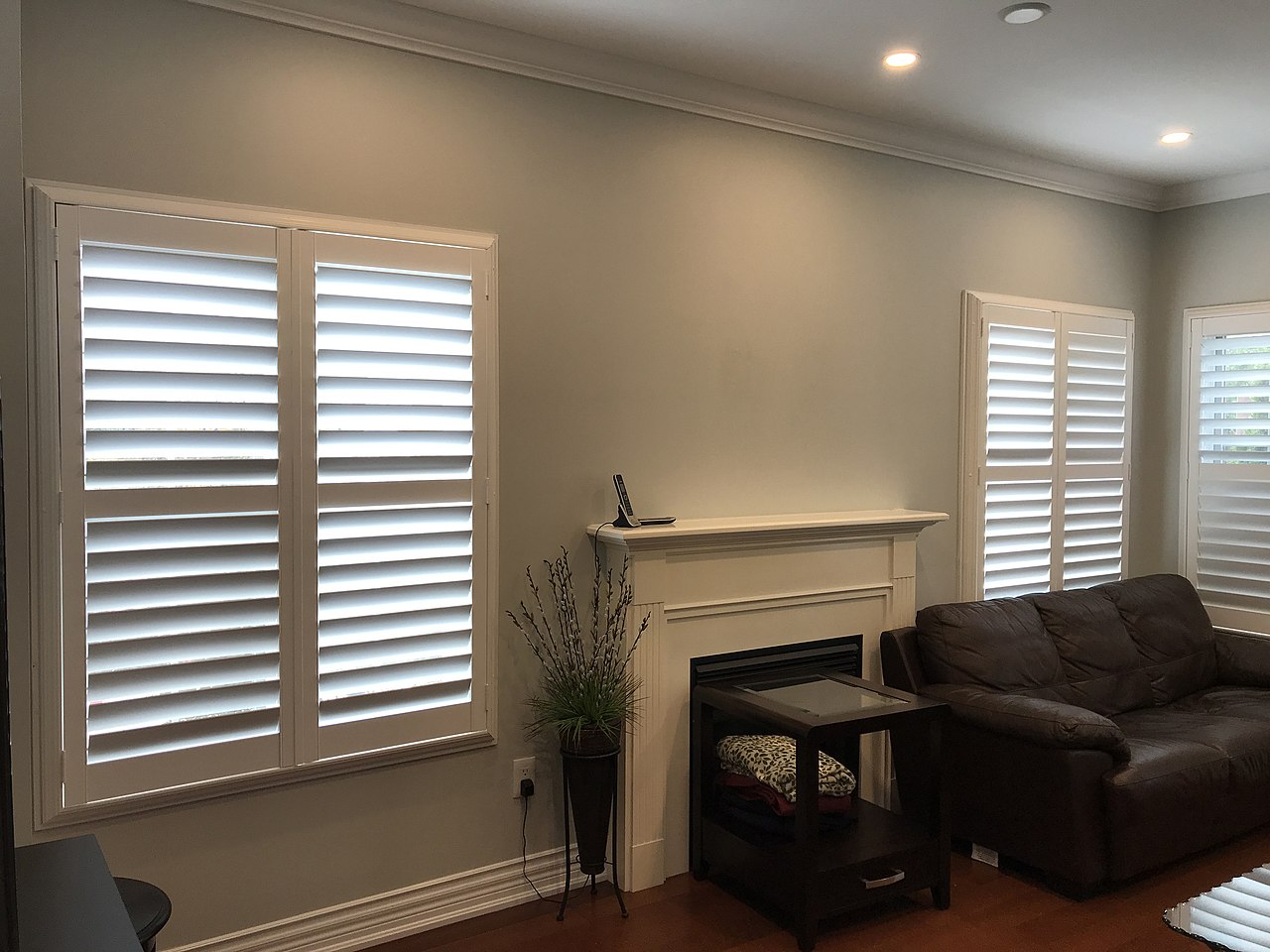Living Big In A Tiny Home: 17 Design, Planning and Arrangement Tips to Maximize Space for Tiny Home Owners and Enthusiasts
Tips to live big in a tiny home include creating defined spaces with different levels, incorporating a spacious porch for extended living, opting for custom-made furniture, decluttering your space, embracing a monochrome color scheme, extending wooden floors for continuity, incorporating storage into staircase design, installing practical corner shelves, maximizing natural and artificial lighting, opting for neutral and light tones, optimizing towel storage with rolling, planning for future growth, providing spaces for individual time, swapping oversized drawers for small baskets, utilizing vertical cladding installation, and using bar tops as functional desks.
1. Create Defined Spaces with Different Levels:

Guidelines:
Design your tiny home with distinct levels to delineate various living areas.
Utilize platforms, steps, or loft spaces to create separation without sacrificing square footage.
Use architectural elements like built-in furniture or changes in floor elevation to define functional zones.
Benefits:
Maximizes the use of limited space by efficiently organizing different living areas.
Enhances the aesthetic appeal of the tiny home by adding visual interest through varied elevations.
Provides a sense of privacy and purpose to each space, contributing to a well-organized and harmonious living environment.
Related Recommendations:
Consider loft beds or raised platforms for sleeping areas to free up floor space.
Use sliding or folding doors to create flexible boundaries between spaces.
Incorporate multi-functional furniture that can serve different purposes on various levels, optimizing functionality.
2. Create a Spacious Porch for Extended Living:

Guidelines:
Design a porch that seamlessly integrates with the tiny home’s layout.
Use furniture that can withstand outdoor conditions to make the porch an extension of the living space.
Consider adding retractable shades or screens for versatility in different weather conditions.
Benefits:
Expands the living area, providing an outdoor retreat for relaxation and socializing.
Enhances the connection with nature, contributing to a more fulfilling living experience.
Offers flexibility for various activities, such as dining, reading, or entertaining guests.
Related Recommendations:
Opt for durable and weather-resistant furniture to withstand outdoor elements.
Incorporate greenery or potted plants to create a natural and inviting atmosphere.
Install outdoor lighting to extend the porch’s usability into the evening.
3. Custom-Made Furniture:
Guidelines:
Tailor furniture to fit specific dimensions and requirements of the tiny home.
Prioritize multi-functional pieces that serve more than one purpose.
Utilize built-in furniture to maximize space utilization and create a seamless look.
Benefits:
Optimizes space by ensuring every piece of furniture serves a practical purpose.
Provides a cohesive and integrated aesthetic, enhancing the overall design.
Allows for creative solutions to fit furniture into unconventional or tight spaces.
Related Recommendations:
Explore custom-built storage solutions, such as under-bed drawers or hidden compartments.
Consider foldable or collapsible furniture to save space when not in use.
Invest in furniture with built-in storage to reduce clutter.
4. Declutter Your Space:

Guidelines:
Regularly assess belongings and prioritize essential items.
Embrace minimalist design principles to avoid unnecessary decorations.
Utilize storage solutions to keep belongings organized and out of sight.
Benefits:
Creates a visually appealing and serene living environment.
Maximizes available space by eliminating unnecessary items.
Facilitates easier cleaning and maintenance in a smaller living space.
Related Recommendations:
Implement storage solutions like wall-mounted shelves or hidden cabinets.
Adopt a “one-in, one-out” rule to prevent the accumulation of unnecessary items.
Choose furniture with built-in storage options to minimize visible clutter.
5. Embrace a Monochrome Color Scheme:

Guidelines:
Choose a single color or variations of a single hue for the overall color palette.
Incorporate different textures and materials within the chosen color scheme to add depth.
Use accents sparingly to create visual interest without overwhelming the space.
Benefits:
Creates a cohesive and visually harmonious interior, making the space feel larger.
Enhances the perception of cleanliness and simplicity.
Allows for easier coordination of furniture and decor.
Related Recommendations:
Experiment with shades of the chosen color to add subtle variations.
Introduce pops of color through small decor items or plants.
6. Extend Wooden Floors for Continuity:

Guidelines:
Use wooden flooring throughout the tiny home to create a seamless flow.
Opt for light-colored wood to add brightness and a sense of expansiveness.
Consider incorporating wooden accents in furniture or wall treatments for consistency.
Benefits:
Provides visual continuity, making the space feel more open and connected.
Reflects natural light, contributing to a brighter and airier atmosphere.
Wood adds warmth and a touch of nature to the interior.
Related Recommendations:
Use rugs strategically to define different areas while maintaining the overall flow.
Choose low-maintenance wood finishes suitable for small spaces.
7. Incorporate Storage into Staircase Design:
Guidelines:
Design stairs with built-in storage compartments to maximize functionality.
Consider open shelving or pull-out drawers within each step.
Ensure the staircase design complements the overall aesthetic of the tiny home.
Benefits:
Efficiently utilizes often-unused space to address storage needs.
Eliminates the need for additional furniture or clutter-inducing storage solutions.
Adds a practical and visually interesting element to the interior.
Related Recommendations:
Customize the size and design of each storage compartment based on specific needs.
Ensure the staircase design prioritizes safety and ease of use.
8. Install Practical Corner Shelves:

Guidelines:
Utilize corners for vertical storage with open shelving.
Opt for floating or wall-mounted corner shelves to avoid taking up valuable floor space.
Arrange items on shelves with care to maintain a clutter-free appearance.
Benefits:
Maximizes storage space in underutilized corners.
Adds a decorative element while serving a functional purpose.
Keeps frequently used items easily accessible.
Related Recommendations:
Experiment with various shapes and sizes of corner shelves to suit the design aesthetic.
Use corner shelves for both decorative items and practical storage solutions.
9. Invest in Custom-Made Furniture:
Guidelines:
Tailor furniture to fit specific dimensions and requirements of the tiny home.
Prioritize multi-functional pieces that serve more than one purpose.
Utilize built-in furniture to maximize space utilization and create a seamless look.
Benefits:
Optimizes space by ensuring every piece of furniture serves a practical purpose.
Provides a cohesive and integrated aesthetic, enhancing the overall design.
Allows for creative solutions to fit furniture into unconventional or tight spaces.
Related Recommendations:
Explore custom-built storage solutions, such as under-bed drawers or hidden compartments.
Consider foldable or collapsible furniture to save space when not in use.
Invest in furniture with built-in storage to reduce clutter.
10. Maximize Natural and Artificial Lighting:

Guidelines:
Prioritize large windows and open curtains to allow natural light to flood the space.
Use mirrors strategically to reflect light and create an illusion of space.
Install efficient lighting fixtures to illuminate the entire tiny home evenly.
Benefits:
Enhances the perception of space, making the interior feel larger and more inviting.
Improves mood and well-being with ample natural light.
Provides flexibility for different activities with well-designed artificial lighting.
Related Recommendations:
Choose light-colored window treatments to maximize light penetration.
Opt for energy-efficient lighting solutions to reduce environmental impact.
Consider LED strips or under-cabinet lighting for task-specific illumination.
11. Opt for Neutral and Light Tones:
Guidelines:
Select a neutral color palette with light tones for walls, furniture, and decor.
Use accents sparingly to add pops of color without overwhelming the space.
Consider white or light-colored ceilings to create a sense of height.
Benefits:
Creates an airy and open atmosphere, visually expanding the tiny home.
Enhances the reflection of natural and artificial light, brightening the space.
Facilitates easy coordination of decor and furniture.
Related Recommendations:
Experiment with textures and patterns within the neutral color scheme.
Introduce color through easily changeable items like cushions or artwork.
12. Optimize Towel Storage with Rolling:

Guidelines:
Roll towels instead of folding to save space and create a visually interesting display.
Use vertical storage solutions like shelves or baskets to keep rolled towels organized.
Consider integrating towel storage into bathroom or kitchen furniture.
Benefits:
Maximizes storage efficiency, especially in small bathrooms or kitchens.
Adds a touch of style by turning towels into decorative elements.
Facilitates easy access to towels without disrupting the overall organization.
Related Recommendations:
Coordinate towel colors with the overall color scheme for a cohesive look.
Use clear containers or baskets for visible and organized towel storage.
13. Plan for Future Growth:

Guidelines:
Design flexible spaces that can adapt to changing needs or family size.
Choose furniture that can be easily reconfigured or expanded.
Consider future expansion options, such as adding modular units or outdoor extensions.
Benefits:
Maximizes the longevity and usability of the tiny home over time.
Accommodates changes in lifestyle, family size, or preferences.
Enhances the resale value by offering versatility to potential buyers.
Related Recommendations:
Invest in modular furniture or partitions for adaptable living spaces.
Keep interior design elements timeless to accommodate changing trends.
Consult with professionals to ensure any structural modifications align with future expansion plans.
14. Provide Spaces for Individual Time:
Guidelines:
Designate quiet corners or nooks for personal activities like reading or meditation.
Utilize room dividers or curtains to create private areas within the tiny home.
Choose comfortable and versatile furniture for these individual spaces.
Benefits:
Supports mental well-being by offering dedicated spaces for relaxation and reflection.
Enhances overall livability by accommodating diverse needs within a small footprint.
Encourages a balanced and harmonious living environment.
Related Recommendations:
Use soft furnishings like cushions or rugs to create cozy and inviting personal spaces.
Ensure adequate lighting for reading or focused activities in individual areas.
Incorporate personal touches or decor to make these spaces uniquely inviting.
15. Swap Oversized Drawers for Small Baskets:

Guidelines:
Opt for smaller, modular storage solutions like baskets instead of large drawers.
Group similar items together in the baskets for efficient organization.
Use open baskets for easy visibility and accessibility.
Benefits:
Maximizes storage efficiency by utilizing vertical space with smaller containers.
Prevents clutter and makes it easier to find and retrieve items.
Adds a decorative element to the interior design.
Related Recommendations:
Label baskets to streamline organization and ensure everything has its place.
Choose aesthetically pleasing baskets that complement the overall decor.
Consider woven or transparent baskets to maintain a light and open feel.
16. Utilize Vertical Cladding Installation:
Guidelines:
Install vertical cladding on walls to draw the eye upward, creating a sense of height.
Use light-colored or reflective materials for vertical cladding to enhance brightness.
Incorporate vertical lines in the design to visually elongate the space.
Benefits:
Creates an illusion of vertical space, making the tiny home feel more expansive.
Adds a modern and visually interesting design element to the interior.
Maximizes the use of wall space for both functional and decorative purposes.
Related Recommendations:
Integrate vertical cladding in areas with less natural light to brighten the space.
Consider incorporating vertical elements in built-in furniture or storage solutions.
Experiment with textures or patterns to add visual interest to vertical surfaces.
17. Use Bar Tops as Functional Desks:

Guidelines:
Designate bar tops or countertops for dual functionality as workspaces.
Ensure the height is suitable for sitting or standing, depending on preferences.
Use bar stools or ergonomic chairs for comfortable and efficient work areas.
Benefits:
Maximizes space utilization by integrating workspaces into existing surfaces.
Creates a versatile environment suitable for both dining and work activities.
Enhances the overall functionality of the tiny home.
Related Recommendations:
Invest in compact and foldable office equipment for efficient storage.
Choose comfortable seating that complements the overall design aesthetic.
Opt for adjustable lighting solutions to cater to various tasks conducted at the bar tops.









